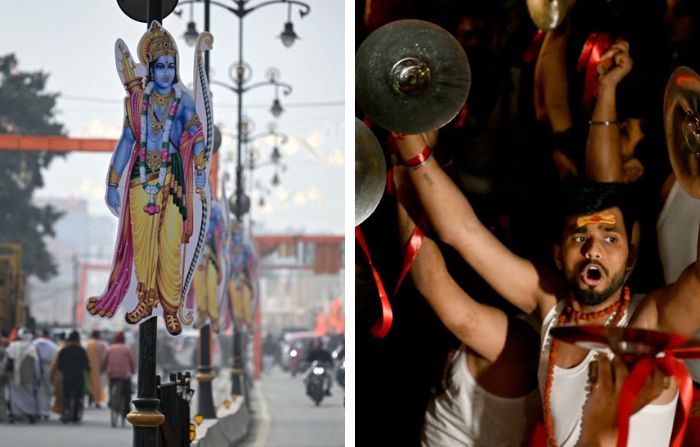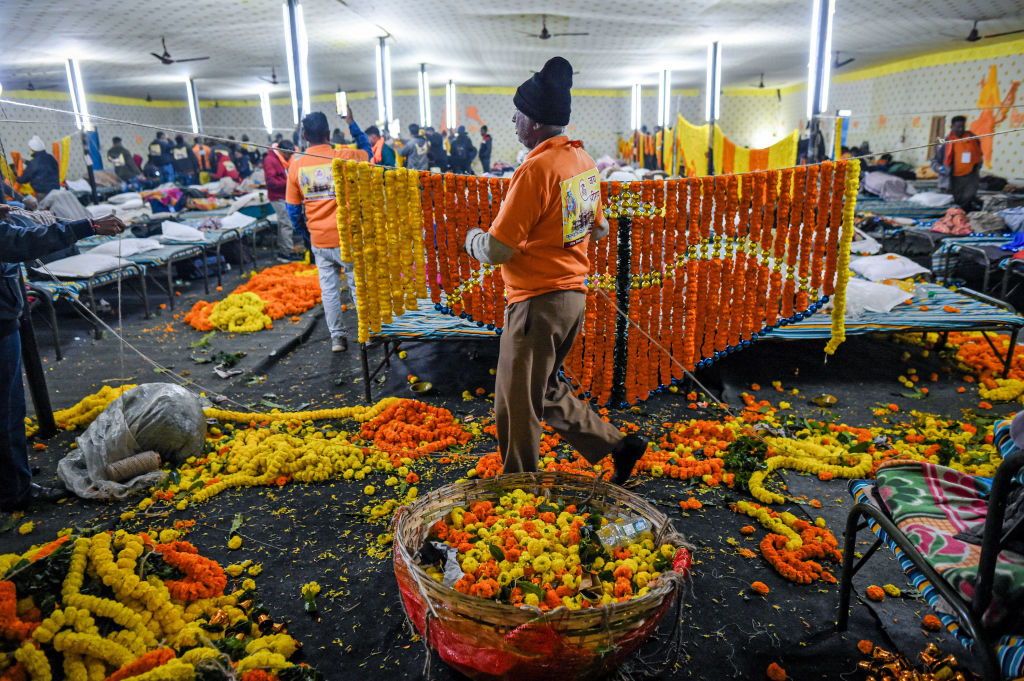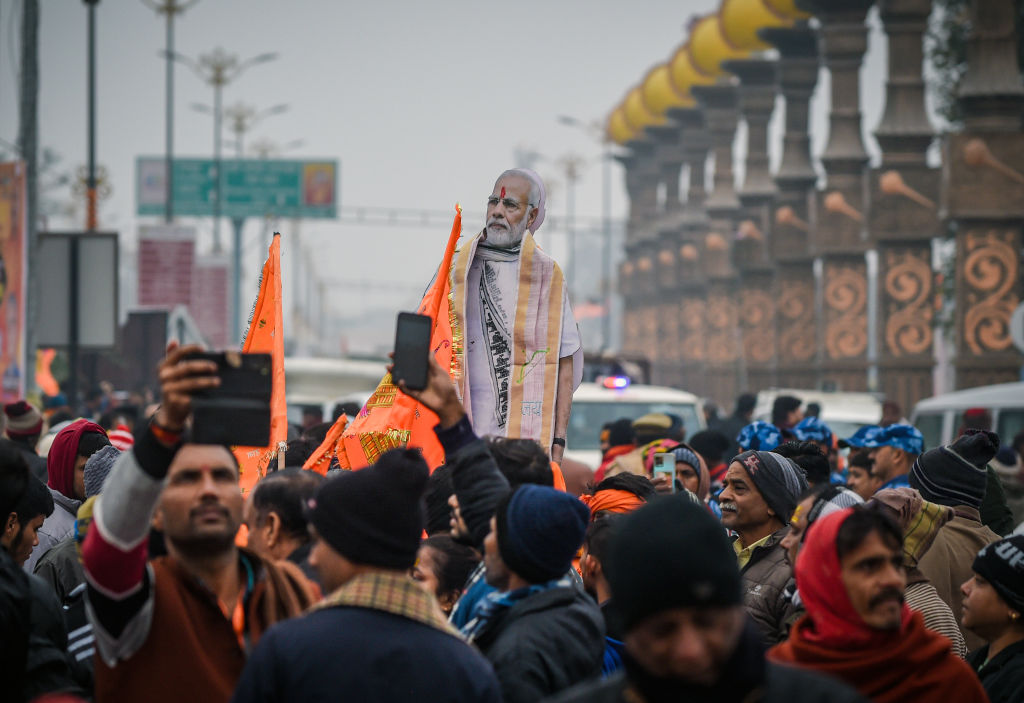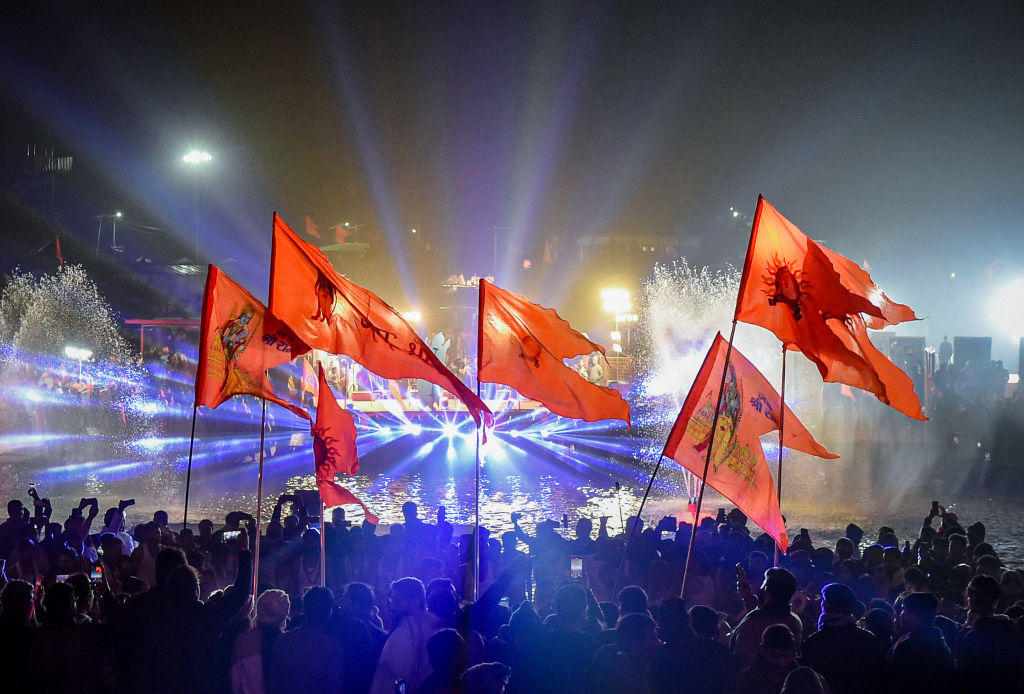- Saturday, May 18, 2024
The town was bedecked with multi-coloured flowers as recordings of ‘Ram dhun’ played from loudspeakers and townsfolk dressed as Lord Ram, Sita, Lakshman and Hanuman paraded down the streets.

By: Shubham Ghosh
INVITEES to the ‘pran pratishtha’ (consecration) ceremony at the Ram temple started arriving Sunday (21) in the northern Indian holy town of Ayodhya — once a sleepy town now resplendent with new infrastructure and gripped by heightened religious fervour — on the eve of a seminal event in India’s politico-religious history.
The town, about 140 kilometres west of the capital of Uttar Pradesh, Lucknow, was bedecked with multi-coloured flowers as recordings of ‘Ram dhun’ (tunes related to songs devoted to Lord Ram) played from loudspeakers and townsfolk dressed as Lord Ram, Sita, Lakshman and Hanuman paraded down the streets followed by delirious devotees, and news camera crews.
“Ayodhya Ram maye ho gayi hai (Ayodhya is immersed in devotion of Lord Ram),” said Shailendra Gupta, who runs a fabric store on Ram Path, the main street of the town that runs past the Ram temple. “And tomorrow is a day when Hindus across the world will rejoice.”
Read: Ram temple: The beginning of new-age tourism in India

Skittish policemen kept order, urging cars to stay mobile. But they could only honk repeatedly to part the sea of pilgrims on Ram Path, many with “Jai Shri Ram” painted on their foreheads in shades of ochre and vermillion.
Ceremonial gates depicting ‘Jai Shri Ram’ in floral patterns and illumination visible at night add to the aura of the ancient city which has undergone a massive infrastructural growth in the last couple of years after the 2019 Supreme Court verdict on the Ram temple issue.
Read: On eve of opening, India’s ISRO releases images of Ram temple as seen from space

“The entire country is chanting the name of Lord Ram,” said Uttar Pradesh deputy chief minister Keshav Prasad Maurya.
All the excitement is in preparation for the mega consecration ceremony on Monday (22), which will climax decades of efforts and agitation to build the temple on the site where Hindus believe Lord Ram was born.
At the site once stood the Babri mosque, which was built in the 16th century. It was demolished by ‘kar sevaks’ or activists on December 6, 1992. After a protracted legal battle, the Supreme Court in November 2019 ruled in favour of the construction of the temple. It also said a five-acre plot for the construction of a mosque be allotted.

Following the ruling, Ayodhya received a burst of infrastructure push. Today, it has wide main streets, flyovers, a brand new airport and a refurbished railway station.
The streets and skyline of Ayodhya are covered with saffron flags fluttering from rooftops of buildings, small and big.
Cut-outs of the Ram temple along with Lord Ram have been put up at Lata Mangeshkar Chowk, while ornamental lamp posts along the Ram Path bearing design themed on ‘Ramanandi tilak’ (sacred mark on the forehead related to the Ramanandi sect) and light patterns depicting religious symbols have turned the city into a land of festivities.
The grand ceremony of the much-awaited ‘pran pratishtha’ will be attended by prime minister Narendra Modi, following which the shrine will be opened for the public a day later.
The ceremony will begin at 12.20 pm and is expected to end by 1 pm. The prime minister will then address a gathering of more than 7,000 people, including seers and prominent personalities, at the venue. The entire event will be telecast live to a nationwide audience of millions, and more outside India.
The excitement among devotees, both local and those who have travelled long distances, reached a near crescendo on Sunday.
In the streets, folk artists presented cultural performances, some swinging peacock feathers while others beat drums and grooved to ‘Ram dhun’ playing in the streets.
Some religious organisations, whose volunteers have come from other states, played ‘Ram bhajan’ (devotional songs) on loudspeakers mounted on a vehicle, while those walking on foot chanted ‘Jai Shri Ram’.
Mahant (seer) Prakash Das Maharaj of an ancient religious shrine in Alwar in Rajasthan, an invitee to the ceremony, said there is an “atmosphere of exuberance” among all about this Ram temple.
“I have brought a pair of ‘silver charanpaduka’ to Ayodhya and today I will present it to the chairman of the Ram temple trust. It weighs about 750 gm, and has been made by artists from Alwar,” he told the news agency PTI.
The mahant said, in 2020, he had presented a silver brick for the bhoomipujan ceremony.
“Tomorrow, the ‘pran pratishtha’ will take place at Ram temple, and see the joy, happiness and delight among the people. With the full installation of Ram Lalla’s idol at the Ram temple, we will see ‘Satyug’ in ‘Kalyug’,” he said, as he walked barefoot towards Hanumangarhi temple to pay obeisance to the deity.
A large number of sadhus and seers, who have been invited to the ceremony, have also arrived in the temple town, officials said.
“We had not imagined that the participation from people would be of such a scale. Even the top citizens of the country are seeking an invite to the ceremony,” Hindu right-wing Vishva Hindu Parishad’s international working president Alok Kumar said.
“In 500,000 temples around the world about 7 to 8 crore (70-80 million) people are expected to join the celebrations tomorrow,” he said. “This celebration is drawing people of the world towards Lord Ram.”
Parapets on roofs of houses along the Bhakti Path which lead to Hanumangarhi temple have also been decked up with flowers.
The scenes in streets are festive and devotees are eagerly awaiting for the doors of the temple to open for them from January 23 onwards.
A song played on loudspeakers with a refrain “Suno Tumhe Ayodhya Bula Rahi Hai” (Ayodhya is calling you, listen!), as millions of devotees are expected to descend on the temple town once it opens.
But, it’s not just the streets and ghats wearing a festive look, even the Ayodhya Media Centre has been dressed up in a religious theme.
Huge banners of the Ram temple have been put up at the centre, while DD news reports on the Ayodhya Ram temple play on big screens.
The media centre has been set up at the Ram Katha Park located along Dharm Path, one of the two showpiece streets in what the government calls ‘Navya Divya and Bhavya Ayodhya’.
(With PTI inputs)
![]()